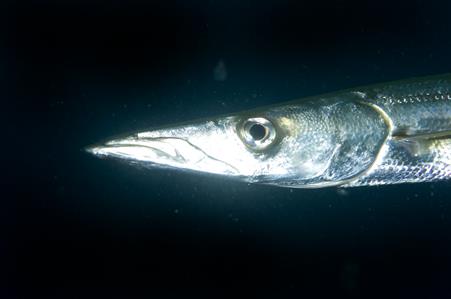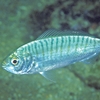General Description
Body streamlined, very long and slender; snout pointed, lower jaw protruding; mouth large, jaw teeth prominent, including large canines in front of lower jaw; dorsal fins short-based, widely separated; anal fin short-based; pelvic fin origin almost below first dorsal fin; tail forked. Body greenish-grey above, sides silvery fading to white below; fins pale greenish-yellow. To 1.1 m, and at least 5 kg.
Biology
These streamlined voracious predators are solitary or hunt in pairs or in small schools, preying on other fishes and squids. They are often seen patrolling near seagrass and kelp beds, and along reef edges. They are a popular recreational species and a good eating fish.
Habitat
Coastal bays and estuaries.
Open water
Reefs
Distribution guide
Southern Australia.
Species Group
Fishes › Barracudas and snooks
Depth
Water Column
Max Size
1.1 m
Diet
Carnivore
Harmful
Not thought to be harmful but potential for injury from sharp pointed teeth.
Commercial Species
Yes
Global Dispersal
Native to Australia
Conservation Status
- DSE Advisory List : Not listed
- EPBC Act 1999 : Not listed
- IUCN Red List : Not listed






